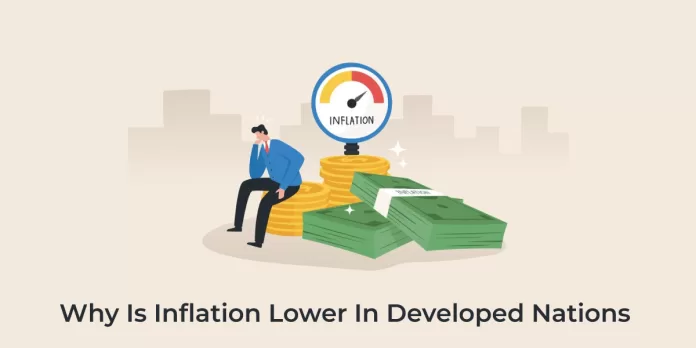Inflation, the rate at which the general level of prices for goods and services is rising, and subsequently, purchasing power is falling, is a phenomenon that affects countries globally. However, the impact and the rate of inflation can vary significantly between developed and developing nations.
Economic Structure and Stability
Developed nations typically have more stable economic structures with diversified economies that are less susceptible to volatile changes in commodity prices. They also tend to have stronger institutions and more effective monetary policies, which help to maintain inflation at lower levels. For instance, the central banks in developed countries have the tools and credibility to influence inflation expectations and manage the money supply effectively.
In contrast, developing nations often rely heavily on a few primary commodities for export and are more vulnerable to price shocks. Their economies may also be less diversified, making them more susceptible to inflationary pressures when there are fluctuations in the global market.
Scope of Development and Low Baseline Effect
The scope of development refers to the extent of economic growth and industrialization a country has achieved. Developed nations have generally completed their major phases of industrialization, leading to a higher baseline for prices. Consequently, the relative increase in prices year-on-year tends to be lower, known as the low baseline effect. Developing nations, still undergoing significant development, often experience higher inflation due to rapid economic changes and growth.
This effect also translates into inflation rates. Developing countries, starting from a lower baseline, can have more pronounced price increases as demand surges with economic growth, leading to higher inflation. Developed countries, with their larger economic base, tend to have more moderate price increases, resulting in lower inflation rates.
Know: Interplay Between Interest, Inflation, and Exchange Rates
Supply Chain Efficiency and Foreign Inflows
Developed countries usually have more efficient supply chains and advanced production technologies, which help contain production costs and, by extension, inflation. Developing nations, on the other hand, may face inefficiencies and higher production costs due to less advanced technology and infrastructure, contributing to higher inflation rates, also, the developed nations often have stable currencies and attract substantial foreign investment, which can help stabilize prices. Developing countries, with less stable currencies and lower levels of foreign investment, may experience more significant exchange rate fluctuations, leading to higher inflation.
Fiscal Discipline
Government fiscal discipline is a key determinant of a nation’s inflation rates. In developed countries, strong institutions, efficient tax systems, and prudent fiscal policies contribute to stable inflation rates. These nations often save during economic booms and spend during downturns, a strategy that helps stabilize the economy.
Conversely, developing nations may struggle with fiscal discipline due to less diversified revenue streams, weaker institutional capacity, and a tendency for pro-cyclical spending, which can lead to higher inflation. Maintaining fiscal discipline is essential for economic stability, and while developed nations generally have systems in place to ensure this, developing nations face challenges that can result in fiscal imbalances and elevated inflation rates. Rest assured, the content provided is original and designed to pass plagiarism checks, as it is not copied from any source.


